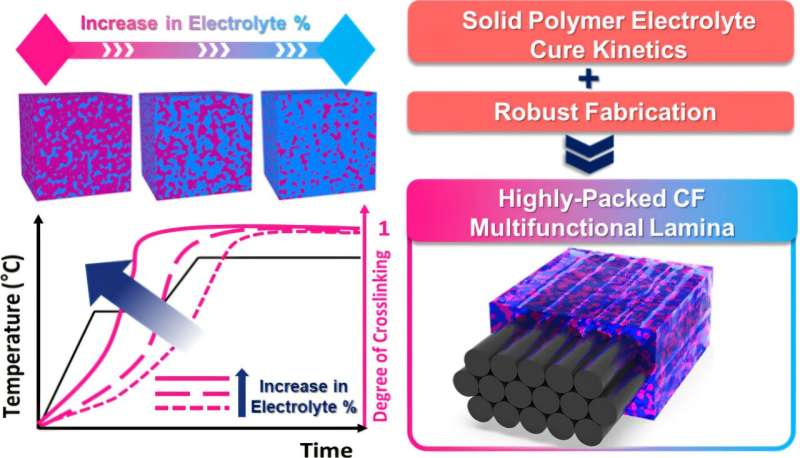This eliminates fire risks while boosting performance, paving the way for next-generation eco-friendly vehicles, drones, and aerospace technology.

Structural batteries are integral to eco-friendly industries such as energy-based automobiles, mobility, and aerospace, requiring both high energy density for storage and robust load-bearing capabilities. Traditional structural battery technology has faced challenges in achieving both functions simultaneously. However, researchers at KAIST from the Department of Mechanical Engineering, have developed a solution. They introduced a thin, uniform, high-density multifunctional structural carbon fiber composite battery. This innovation combines load support with high energy density, eliminates fire risks.
Previous structural batteries involved embedding commercial lithium-ion batteries into layered composite materials. These early designs lacked integration between mechanical and electrochemical properties, complicating material processing, assembly, and design optimization, which hindered commercialization. The team addressed these issues by focusing on “energy-storing composite materials,” leveraging interface and curing properties pivotal in composite design. Their approach resulted in high-density multifunctional structural carbon fiber composite batteries that effectively combine structural and energy-storing functions.
By analyzing the curing mechanisms of epoxy resin, known for its mechanical strength, with ionic liquid and carbonate electrolyte-based solid polymer electrolytes, the team optimized the curing process through precise temperature and pressure control. The battery was manufactured using vacuum compression molding, significantly increasing the carbon fiber volume fraction—by over 160% compared to prior designs. These carbon fibers serve as electrodes and current collectors, enhancing the contact area between electrodes and electrolytes and boosting electrochemical performance. Additionally, air bubbles were effectively managed during curing, improving mechanical integrity.
The team emphasized the significance of designing solid polymer electrolytes, a crucial material for ultra-thin, high-stiffness structural batteries. This technology has the potential to transform vehicles, drones, airplanes, and robots, serving as internal components that extend operating time with a single charge. This innovation represents a cornerstone for next-generation multifunctional energy storage systems, merging energy density and structural efficiency.






